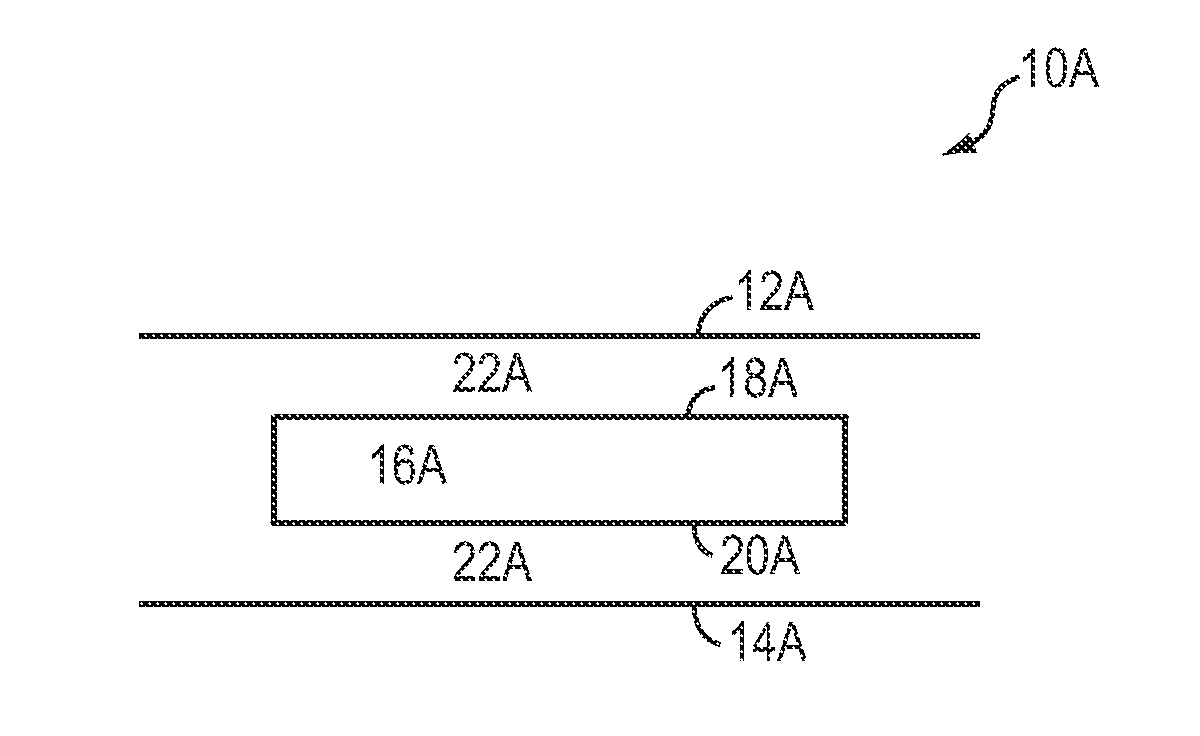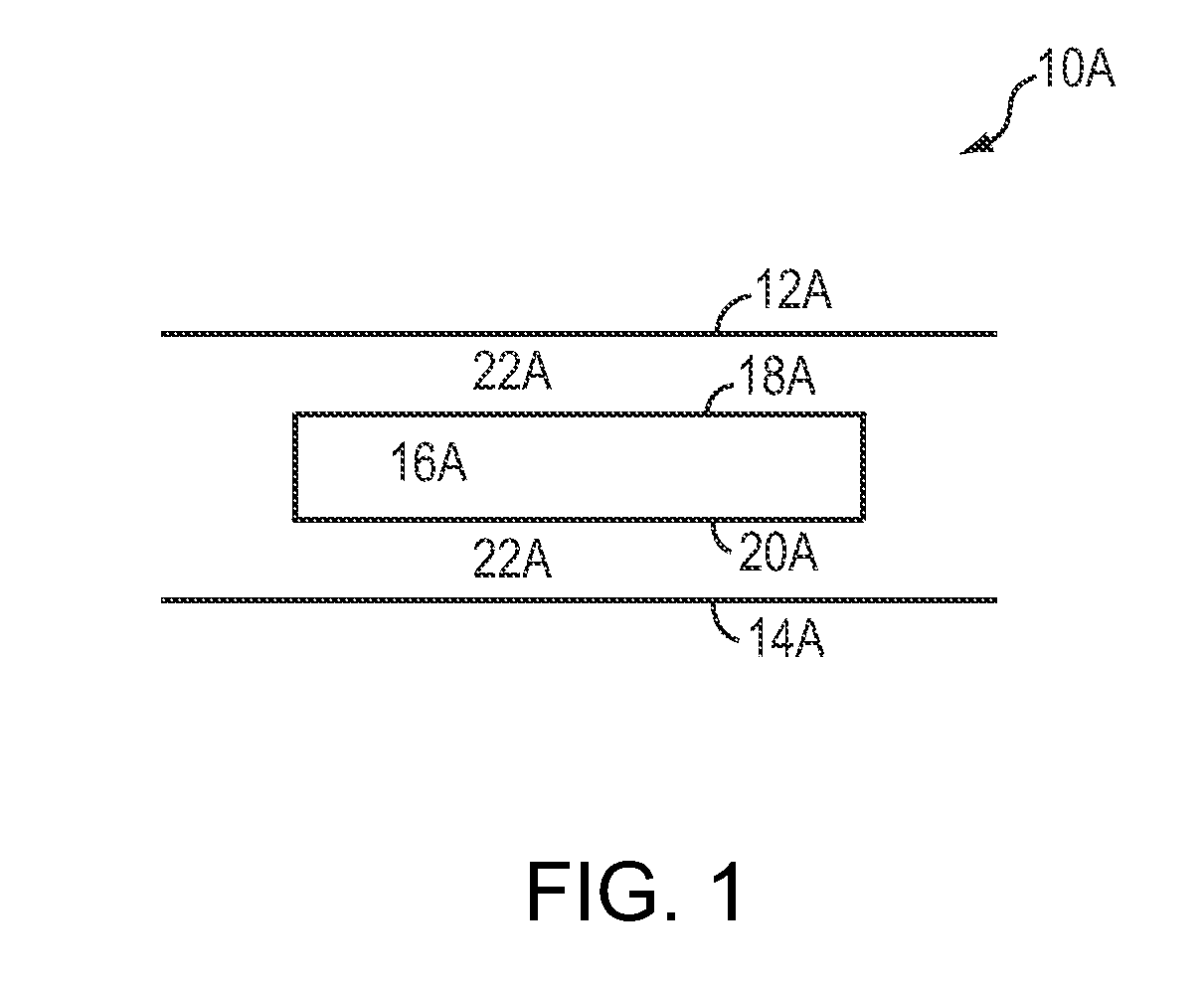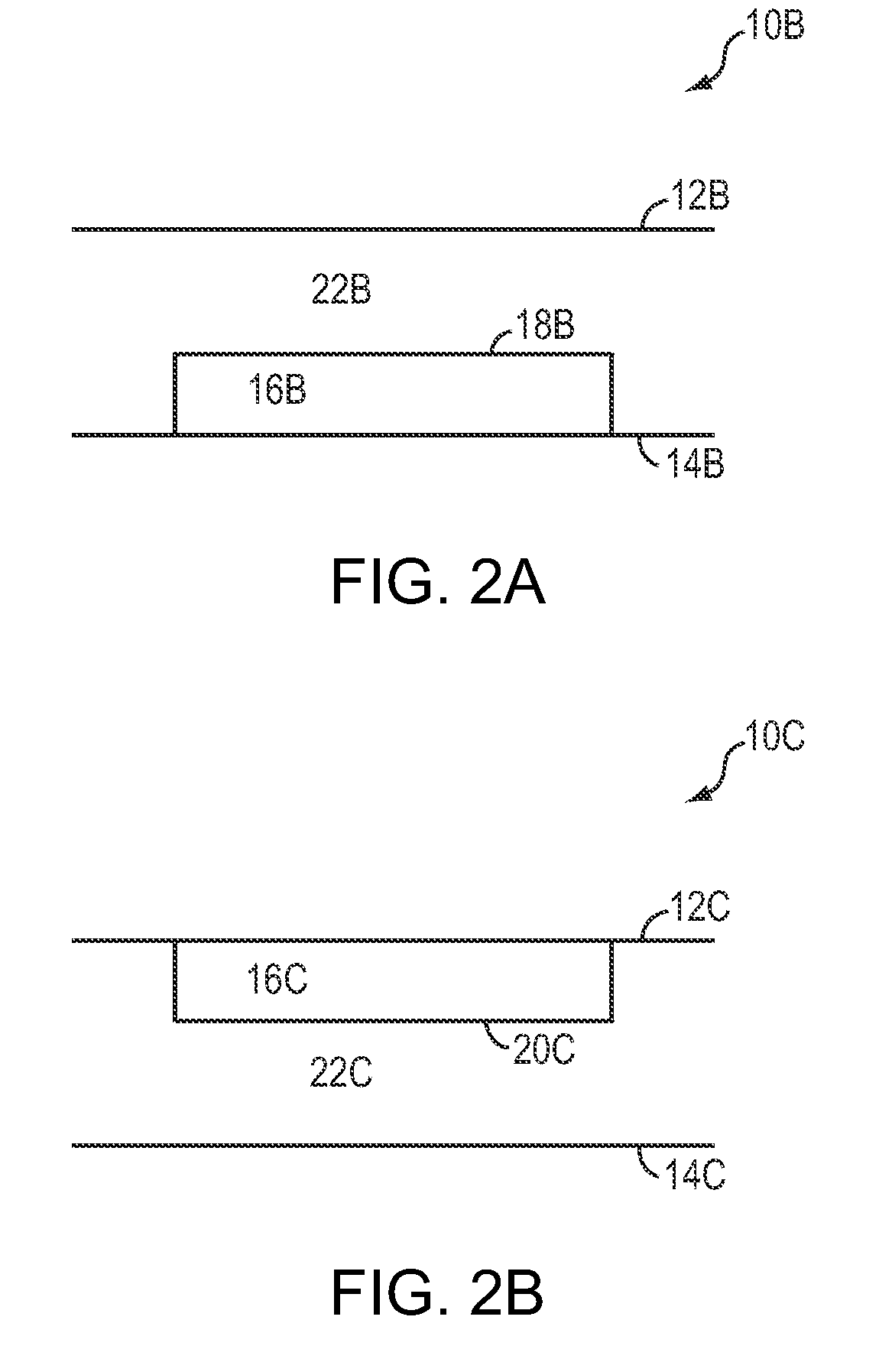Polymeric Encapsulants for Photovoltaic Modules and Methods of Manufacture
a photovoltaic module and polymer technology, applied in the direction of basic electric elements, electrical equipment, synthetic resin layered products, etc., can solve the problems of discoloration of polymers, acetic acid produced by crosslinking reaction may also corrode cell materials, and residual peroxides from crosslinking step contribute to long-term degradation of eva and cells themselves, etc., to achieve long-term stability to uv exposure, strong adhesion to glass, and high light transmi
- Summary
- Abstract
- Description
- Claims
- Application Information
AI Technical Summary
Benefits of technology
Problems solved by technology
Method used
Image
Examples
example 1
[0033]Example 1 was manufactured using a terpolymer (Lotader® AX 8900 sold by Akema) and a copolymer (Lotader® AX 8840 sold by Arkema). The composition is found in Table A-1.
TABLE A-1Example 1 CompositionComponentPercent CompositionBase Terpolymer (Lotader ® AX 8900)70%Base Copolymer (Lotader ® AX 8840)30%
[0034]Example 1 was manufactured using the processing parameters in Table B-1.
TABLE B-1Example 1 Processing ParametersBarrel Temp. Zone 1 (° F.)310Barrel Temp. Zone 2 (° F.)330Barrel Temp. Zone 3 (° F.)350Barrel Temp. Zone 4 (° F.)400Barrel Temp. Zone 5 (° F.)400Barrel Temp. Zone 6 (° F.)410Barrel Temp. Zone 7 (° F.)410Screen Changer Temp. (° F.)410Extrusion Die Temp. (° F.)400Screw (rpm)84Line speed (yard / minute)20
[0035]Example 1 was extruded as a melt-cast film onto silicone coated release paper of 60 in.×500 yards×15 mil in size, allowed to cool, then tested as described below.
example 2
[0036]Example 2 was manufactured using both the terpolymer and copolymer of Example 1, a carrier resin of 80% ethylene and 20% methyl acrylate (e.g., Lotryl® 20 MA 08 sold by Arkema), and additives, as depicted in Table A-2. Example 2 was extruded as a melt-cast film onto silicone coated release paper having dimensions of approximately 60 in ×500 yards×15 mil, under the same processing conditions as Example 1.
TABLE A-2Example 2 CompositionComponentPercent CompositionBase Terpolymer55.0%(Lotader ® AX 8900)Base Copolymer30.0%(Lotader ® AX 8840)Carrier Resin14.15%(Lotryl ® 20 MA 08)Cytec Cyasorb 5310.3%Chemtura Naugard P0.2%Ciba Tinuvin 7700.1%Dow Corning Z-6030 silane0.225%Dow Corning Z-6011 silane0.025%
example 3
[0037]Example 3 was manufactured using both the terpolymer and copolymer of Example 1, the carrier resin of Example 2, and additives, as depicted in Table A-3. Example 3 was extruded as a melt-cast film onto silicone coated release paper having dimensions of approximately 60 in ×500 yards×15 mil, under the same processing conditions as Example 1, except that the barrel temperatures for zones 1 through 7 were all 325° F.
TABLE A-3Example 3 CompositionComponentPercent CompositionBase Terpolymer60.0%(Lotader ® AX 8900)Base Copolymer30.0%(Lotader ® AX 8840)Carrier Resin9.25%(Lotryl ® 20 MA 08)Cytec Cyasorb 5310.3%Ciba Irgafos 1680.1%Ciba Tinuvin 7700.1%Dow Corning Z-6582 silane0.225%Dow Corning Z-6011 silane0.025%
PUM
| Property | Measurement | Unit |
|---|---|---|
| density | aaaaa | aaaaa |
| density | aaaaa | aaaaa |
| temperature | aaaaa | aaaaa |
Abstract
Description
Claims
Application Information
 Login to View More
Login to View More - R&D
- Intellectual Property
- Life Sciences
- Materials
- Tech Scout
- Unparalleled Data Quality
- Higher Quality Content
- 60% Fewer Hallucinations
Browse by: Latest US Patents, China's latest patents, Technical Efficacy Thesaurus, Application Domain, Technology Topic, Popular Technical Reports.
© 2025 PatSnap. All rights reserved.Legal|Privacy policy|Modern Slavery Act Transparency Statement|Sitemap|About US| Contact US: help@patsnap.com



